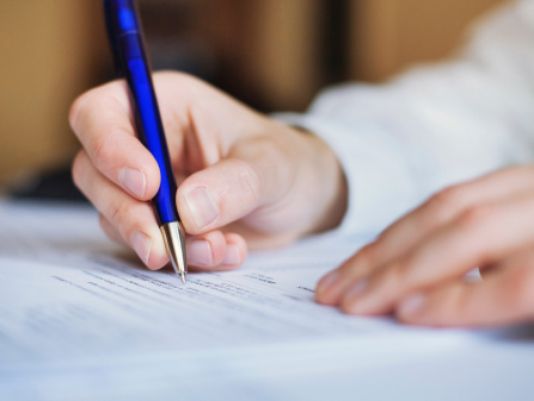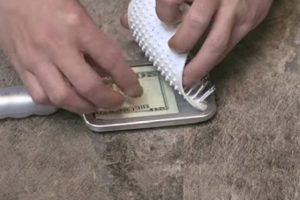Transactions related to the purchase and sale of real estate, in recent years, are increasingly executed through the bank with a mortgage. Favorable interest rates, minimum terms of consideration, the possibility of using a maternity certificate and state subsidy programs make them more affordable. Those who first encounter banking services when they come to the office hear a lot of new terms and expressions. One of them is mortgage by law. What is it - so do not immediately understand. Therefore, it is worth considering this issue separately, so that participants in the transaction have an understanding and awareness of what is happening.
Mortgage designation by law

In the Civil Code and Federal Law of the Russian Federation No. 102 “On Mortgages”, the legislator has fixed the definition of what it is - a mortgage by virtue of the law. This direction of lending always implies the presence of an encumbrance or it is also commonly called a collateral. Most often, registration of real estate transactions through the use of bank funds. Thus, a mortgage arises. The most reliable option is to formalize it by force of law, since the borrower will not be able to challenge the right of ownership in view of the guaranteed existence of an encumbrance.
Once the right to real estate is registered in the Unified State Register (Unified State Register of Rights), we can talk about the emergence of obligations of this type of mortgage. The right of ownership is formed by drawing up an annuity contract, sale and purchase, pledge of property rights.
Design Features

Most clients first get approval for a mortgage loan and only then start looking for a suitable property. Having decided, they sign a loan agreement and only after the sale. As soon as the state registration of mortgages by law, the bank transfers the loan to the seller of real estate. Thus, customers cannot choose in what form a mortgage will be issued. When it comes to buying real estate using borrowed funds, a mortgage will automatically be considered formalized by law.
Documentary, the borrower becomes the owner of the property, but since it is acquired at the expense of borrowed funds, it also becomes a pledge. The borrower can spend the money received only on the purchase of a real estate object, which subsequently passes as collateral to a credit institution. Cash use of credit money is not provided.
Grounds for registration
The following types of real estate are fixed at the legislative level, which can be purchased as part of a mortgage: an apartment on the secondary market or a new building, a room, a land plot, a house (cottage, mansion), a garage, a cooperative, and a production room. If one of them is acquired using part of the bank funds, then a mortgage arises by virtue of the law. This includes the case when real estate is purchased in installments.
It can also be provided when drawing up an annuity contract or for building a house. When constructing a structure or building on a land plot that is encumbered by a credit institution, the mortgage will also apply to these objects. The exception may be the rules prescribed in the mortgage agreement.
Obligations and rights of the borrower

After the mortgage is formalized by law, the mortgage must be kept in the same form as it was originally transferred.The borrower's liability extends to cases of damage or loss of integrity of property. If one of these points occurred, it is necessary to inform the lender.
In the event that the country house is the subject of the mortgage, the borrower has the right to build up the area around it with any buildings that do not contradict the law. To do this, he does not need to obtain the approval or consent of the bank.
If the parameters of a mortgage loan provide for the possibility of transferring the mortgaged property to a third party, then it becomes the mortgagor and is responsible for fulfilling the terms of the mortgage agreement. This may also include obligations that the previous owner violated.
Registration of the right

Having decided what a mortgage is by virtue of the law, you need to understand how the registration procedure takes place. Each case that is associated with a change in ownership is subject to state registration in the Unified State Register of Rights. Before you make a deal, you need to decide whether the object is encumbered by third parties. You can verify the information through the online services of the Unified State Register of Enterprises or the International Financial Center, by contacting the Federal Registration Service.
In order to proceed to the registration process, the following steps must be taken:
- Get approval for a loan at the bank, draw up a contract of sale.
- Provide these documents to the state body, as well as a mortgage for registration.
Registration is carried out within 5 business days. If we talk about real estate such as land, non-residential premises, construction, building, then Russian law provides for a period of 15 working days.
Documenting

The official confirmation that the property is encumbered is a mortgage. As a rule, after registering a mortgage by force of law, it is executed by a bank employee. However, there are also cases when a notary draws up a mortgage.
Since the property is encumbered, it cannot be realized without the approval of the bank. In the certificate of registration of rights in the section “Encumbrance”, a note must be made that the object was acquired at the expense of credit funds. As soon as all the debt has been paid off and the obligations to the bank have been fully fulfilled, the registrar will put a cancellation stamp on the certificate of ownership. The state duty for this procedure is not charged, the law provides for a three-day period for the implementation of this procedure.
Without the written consent of the pledge holder, it is impossible to seize or alienate immovable property taken on a mortgage.
Can I replace with a mortgage by virtue of an agreement
To understand what it is - mortgages by virtue of the law, it is necessary to distinguish its other form - mortgages by virtue of the contract. It is possible during the execution of a transaction with an object of real estate already owned by the future borrower, which he transfers as collateral. It is also possible that the borrower receives a loan, draws up the right of ownership and only then transfers the property as collateral to the bank. Without a mortgage, a contract is also possible by virtue of an agreement, in which case no encumbrance will arise.
This direction has certain risks, since there is a possibility of non-repayment of issued funds. It is impossible to determine the type of mortgage yourself. It follows on the basis of the subject of the mortgage and the method of disposal of funds received.
Briefly about the differences between the two forms of mortgages
To summarize the differences, it will look like this:
- Registration procedure: the mortgage by virtue of the contract is subject to registration separately, and the documents must be submitted to the Unified State Register together with the mortgagor and the mortgagee.When registering a mortgage agreement, by virtue of the law, the registration process occurs simultaneously with the registration of rights in the Unified State Register by the new owner. The pledge holder and the pledgor may submit documents to the state body separately.
- By virtue of the law, obtaining a mortgage implies the targeted use of funds, in which the acquired property automatically becomes a pledge. Under a contractual mortgage, there may not be any collateral, but the owner's real estate may act as a burden.
- The process of registration of a mortgage by virtue of the law does not provide for the need to pay a state fee, which cannot be said with its contractual form.
Change of holder or termination of a mortgage

In the event that a mortgage of property is registered by virtue of law, but the borrower does not fulfill his obligations, the mortgage can be transferred to the creditor for sale. As soon as the obligations under the mortgage loan agreement are fulfilled, the debt is repaid, it (the mortgage) ceases to be valid. You can safely talk about removing the mortgage by virtue of the law.
At the legislative level, a mortgage holder may be changed, for example, when selling it or refinancing a mortgage loan. If the owner of the certificate needs to have no credit marks in the “Burden” field, he will need to issue a new certificate. To receive it, the owner pays a state fee of 200 rubles.
Duration of consideration and necessary documents to remove the burden

The maximum period during which state registration of removal of encumbrance occurs is three days. To implement the procedure, you must provide the following documents:
- Application from the mortgagor with documents attesting to the full performance of obligations under the mortgage.
- The application of the mortgage holder is usually executed on behalf of the bank.
- If the termination of obligations under the mortgage was made on the basis of a court decision, then it must also be provided.
An application may be submitted jointly by the owner of the property and the bank. In most cases, after full fulfillment of obligations, the client (former borrower) himself turns to the state body. It is noteworthy that he can get a mortgage by signing an acceptance certificate at a bank branch where a mortgage loan was issued. You will also need a certificate of absence of debt indicating the date when the mortgage contract was closed.
If the bank is large, then it can independently remove the burden, after the borrower has fulfilled the obligations on the mortgage.









